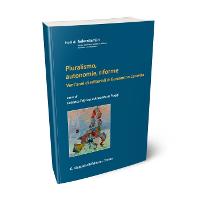
Log in or Create account
FOCUS - Reflective Judiciary N. 5 - 09/11/2018
Reflective Judiciary: more an illusion than a temptation
Any discourse about the Judiciary and its role in the contemporary comparative constitutional debate cannot do without a reference to the Separation of Powers Theory, where the idea itself of a Judiciary as an autonomous function, separated from the Administration or the Executive, was elaborated for the first time. According to medieval political theory, the two activities traditionally performed by the King were Gubernaculum and Juridictio: the latter – consisting in the definition of a legal right - was a mixture between what we now conceive as the two separate regulatory and judicial functions, collectively considered, as opposed to the Gubernaculum or Imperium. The main difference between the two is that Jurisdictio was limited by principles of reason, while Gubernaculm or Imperium was not, since it was up to the discretion of the King. It was Montesquieu who conceived the distinction between administrative and judicial activities and thus fostered the need to entrust two different bodies with those two different activities, consequently overcoming the unity of the Jurisdictio within the King’s powers. It is interesting to note that in Book XI, Chapter VI of the Esprit des Lois, where how Constitutions can establish political liberty and the principle of separation of powers are described, Montesquieu suggests how to render the Judiciary an “invisible power”. In order to obtain such invisibility, judicial decisions must be taken by lay-men and not by professional judges… (continues)
NUMERO 21 - ALTRI ARTICOLI
-
ITALIA - DOTTRINA
Le potenzialità dell'azione giuridica comunale nello sviluppo prospettico della normativa costituzionale sulle formazioni sociali
ITALIA - DOTTRINAIl regionalismo differenziato alla luce delle recenti evoluzioni
ITALIA - DOTTRINAThe European Banking Authority in light of the CJEU jurisprudence
-
ITALIA - DOTTRINA
Tempo e potere di riesame: l'insofferenza del giudice amministrativo alle 'briglie' del legislatore
ITALIA - DOTTRINACompetenza del giudice ordinario e tardività dell’eccezione di arbitrato
-
ITALIA - DOTTRINA
Uguaglianza, diritti umani e vincoli di bilancio
ITALIA - DOTTRINALe strategie macroregionali dell'Unione europea



 Registrati
Registrati Login
Login
 Riforme istituzionali e forma di governo
Riforme istituzionali e forma di governo Lavoro Persona Tecnologia
Lavoro Persona Tecnologia Osservatorio di Diritto sanitario
Osservatorio di Diritto sanitario Osservatorio Trasparenza
Osservatorio Trasparenza Africa
Africa Human Rights
Human Rights America Latina
America Latina Territorio e Istituzioni
Territorio e Istituzioni Storico focus
Storico focus Scarica il Documento integrale
Scarica il Documento integrale STUDI FEDERALISMI
STUDI FEDERALISMI





03/06/2024
15/03/2024
29/12/2023
04/08/2023
05/06/2023
30/01/2023
09/12/2022
28/10/2022
28/03/2022
02/02/2022
17/01/2022
12/02/2021
18/01/2021
13/11/2020
12/10/2020
17/06/2020
01/06/2020
18/05/2020
04/05/2020
24/04/2020
10/04/2020
27/03/2020
10/04/2020
25/10/2019
27/09/2019
15/04/2019
25/03/2019
14/01/2019
14/12/2018
16/11/2018
09/11/2018
14/09/2018
03/09/2018
22/06/2018
23/02/2018
27/11/2017
02/10/2017